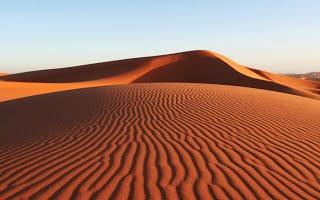September 1st "Climate and Water Report" Published

Current Valley Conditions (SCAN): Ditto last month, unfortunately. August was another very dry month in Utah’s valley locations, where a scant 0.2 inches of precipitation accumulated. The water year total for Utah’s lower elevations incremented up to just 7.5 inches, which is well below average. Soil moisture conditions are now significantly below normal in most parts of the state, and a couple regions, such as Western and Dixie and South Central Utah, are experiencing record dry soil moisture levels for this time of year. Not surprisingly, drought conditions continued to deteriorate in August. The percentage of Utah under any drought condition (D0-D4) has increased to about 99% of the state, which is up from roughly 91% a few months ago. As of late August, almost 30% of Utah is classified as experiencing D3 (extreme) drought (no D3 existed in Utah a few months ago). We’re ready for the precipitation to resume!”
“Current Mountain Conditions (SNOTEL): As of September 1st, the water-year-to-date (October through August) precipitation at Utah’s mountain locations was 79% of average. August precipitation, where it existed, was only 18% of normal. The statewide mountain soil moisture is at 24 percent of saturation, which is even drier than last year at this time and is well below normal, with some basins (e.g. Lower Bear) close to 90%, and others (SE Utah, Upper Green watersheds) closer to 50%. Utah’s reservoirs are suffering from the dry conditions- particularly in the Sevier watershed and several other locations. Statewide reservoir storage is currently at 67% of capacity. Water Availability Index values, which combine current reservoir storage with streamflow for major Utah watersheds, are generally around average or slightly below, except for the Eastern Uintas, Moab area, San Pitch, Blacks Fork, and Lower Sevier watersheds which are all at the 25th percentile or below.
So… looking for some positive news? The Utah Snow Survey installed a new SNOTEL site at Wolf Creek Pass (in between Woodland and Hanna) in late August. The site is called “Wolf Creek Peak” and sits at 9800 ft elevation. This site fills a gap in our SNOTEL network at the headwaters of the Duchesne and Provo watersheds, and reconnaissance from a couple trips last winter showed that it accumulated and retained more snow water equivalent than the Trial Lake site! It’s a standard SNOTEL site configuration, with publicly-available hourly data on snow water equivalent, snow depth, precipitation, air temperature, soil moisture and soil temperature. Data from this new site can be obtained from our website, or from: https://wcc.sc.egov.usda.gov/nwcc/site?sitenum=1164&state=ut.

